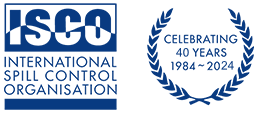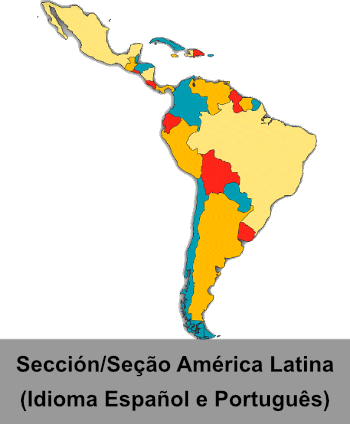This is part of a weekly column which provides the references and abstracts of new peer-reviewed scientific publications on oil spills.

Contributed by Dr Merv Fingas, this weekly column will provide the references and abstracts of new peer-reviewed scientific publications on oil spills. These references are selected on the basis of those papers that provide new insights into the fate, effects and control of oil spills.
Readers may choose to obtain the full publications and to do so, one of three methods is suggested; contact your library, search the internet with the DOI (digital object identifier) provided, or search the internet for the exact title. These are given in the order of likely success in obtaining the article. We hope that this provides useful information. Merv Fingas, ISCO colleague.
43. Effects of dispersant-treated oil upon behavioural and metabolic parameters of the anti-predator response in juvenile European sea bass (Dicentrarchus labrax), Aimon, C., Lebigre, C., Le Floch, S., Claireaux, G. (2022) Science of the Total Environment, 834, art. no. 155430,
DOI: 10.1016/j.scitotenv.2022.155430
ABSTRACT: Acute exposure to oil and oil dispersants can cause a wide range of physiological dysfunctions in marine fish species and evidences for consequences on behaviour are also increasing. In response to the presence of predators or to food availability, the modulation of locomotor activity and schools’ behaviour enable fish to maximize their survival rates. However, the degree to which this regulatory process is affected by exposure to oil and/or dispersants is yet unknown. Here we investigated the effect of a 62-h experimental exposure to dispersant-treated oil on the behavioural (shoal cohesion, spontaneous activity) and metabolic (oxygen consumption) responses to simulated predation in juvenile European sea bass, Dicentrarchus labrax L. Our results suggest that exposure to petroleum hydrocarbons may affect negatively individual fitness through impaired ability to respond to predation. Shoal cohesion was not affected, but fish swimming activity was higher than control individuals under predation pressure and the amplitude of their metabolic response was significantly reduced. Fish recovered from alteration of their metabolic response 7 days post-exposure. Additionally, a strong habituation component was observed in C fish and the absence of such pattern in E fish suggest altered capacity to habituate over time to the surrounding environment and possible impairments of the related cognitive performances. Altogether, our data show that juvenile sea bass exposed to oil exhibit transient physiological dysfunctions and impairments of complex behaviours that may have major population-level consequences.
44. Best available technique for the recovery of marine benthic communities in a gravel shore after the oil spill: A mesocosm-based sediment triad assessment, Kim, T., Lee, C., Lee, J., Bae, H., Noh, J., Hong, S., Kwon, B.-O., Kim, J.-J., Yim, U.H., Chang, G.S., Giesy, J.P., Khim, J.S. (2022) Journal of Hazardous Materials, 435, art. no. 128945,
DOI: 10.1016/j.jhazmat.2022.128945
ABSTRACT: Ecotoxicological effects of spilled oils are well documented, but study of recovery of marine benthic communities is limited. Long-term recovery of hard bottom communities during physical and biological remediations after a spill was monitored. A 60-day experiment was conducted using a mesocosm with monitoring of eight endpoints by use of the sediment quality triad (SQT). First, physical treatment of hot water + high pressure flushing maximally removed residual oils (max=93%), showing the greatest recovery among SQT variables (mean=72%). Physical cleanup generally involved adverse effects such as depression of the microphytobenthic community during the initial period. Next, biological treatments, such as fertilizer, emulsifier, enzyme and augmentation of the microbes, all facilitated removal of oil (max=66%) enhancing ecological recovery. Analysis of the microbiome confirmed that oil-degrading bacteria, such as Dietzia sp. and Rosevarius sp. were present. A mixed bioremediation, including fertilizer + multi-enzyme + microbes (FMeM) maximized efficacy of remediation as indicated by SQT parameters (mean=47%). Natural attenuation with “no treatment” showed comparable recovery to other remediations. Considering economic availability, environmental performance, and technical applicability, of currently available techniques, combined treatments of physical removal via hand wiping followed by FMeM could be most effective for recovery of the rocky shore benthic community.
45. Vertical distribution characteristics and interactions of polycyclic aromatic compounds and bacterial communities in contaminated soil in oil storage tank areas, Xu, G., Geng, S., Cao, W., Zuo, R., Teng, Y., Ding, A., Fan, F., Dou, J. (2022) Chemosphere, 301, art. no. 134695,
DOI: 10.1016/j.chemosphere.2022.134695
ABSTRACT: Polycyclic aromatic compound (PAC) contamination in soil as a result of oil spills is a serious issue because of the huge global demand for fossil energy. This study assessed the vertical variation in polycyclic aromatic hydrocarbons (PAHs), derivatives of PAHs (dPAHs) and bacterial community structure in deep soil with long-term contamination by oil spillage. Our results suggest that the content of total PACs ranged from 1196.6 μg/kg to 14980.9 μg/kg and decreased with depth at all sites. PAHs were the most abundant PACs, with a mean concentration of 6640.7 μg/kg, followed by oxygenated PAHs (mean 156.3 μg/kg) and nitrated PAHs (mean 33.4 μg/kg). PAHs are mainly low molecular weight PACs such as naphthalene, fluorene and phenanthrene, while derivatives of PAHs are all low molecular weight PACs and mainly oxygenated PAHs. Low molecular weight PAHs were an important source of dPAHs under specific conditions. The bacterial community structure showed higher bacterial diversity and lower bacterial richness in shallow soil (2–6 m in depth) than in deep soil (8–10 m in depth). Spearman’s analysis confirmed that dramatic bacterial community shifts are a response to contamination. At the genus level, the presence of PACs highly selected for Pseudomonas, belonging to Proteobacteria. Moreover, functional predictions based on Tax4Fun revealed that soil with long-term contamination had a strong potential for PAC degradation. In addition, statistical analysis showed that oxidation-reduction potential (Eh) was closely related to variations of bacterial community composition and function. Finally, Ramlibacter, Pseudomonas, Pseudonocardia, c_MB-A2-108, f_Amb-16S-1323, and Qipengyuania were identified by cooccurrence network analysis as keystone taxa contributing to the maintenance of bacterial ecological function. Together, our results provide evidence of tight bacterial effects of PAHs and dPAHs and a more complete understanding of the fate of PACs in deep contaminated soils.
46. Integrative description of changes occurring on zebrafish embryos exposed to water-soluble crude oil components and its mixture with a chemical surfactant, González-Penagos, C.E., Zamora-Briseño, J.A., Améndola-Pimenta, M., Elizalde-Contreras, J.M., Árcega-Cabrera, F., Cruz-Quintana, Y., Santana-Piñeros, A.M., Cañizárez-Martínez, M.A., Pérez-Vega, J.A., Ruiz-May, E., Rodríguez-Canul, R.
(2022) Toxicology and Applied Pharmacology, 445, art. no. 116033,
DOI: 10.1016/j.taap.2022.116033
ABSTRACT: The effects of crude oil spills are an ongoing problem for wildlife and human health in both marine and freshwater aquatic environments. Bioassays of model organisms are a convenient way to assess the potential risks of the substances involved in oil spills. Zebrafish embryos (ZFE) are a useful to reach a fast and detailed description of the toxicity of the pollutants, including both the components of the crude oil itself and substances that are commonly used for crude oil spill mitigation (e.g. surfactants). Here, we evaluated the survival rate, as well as histological, morphological, and proteomic changes in ZFE exposed to Water Accumulated Fraction (WAF) of light crude oil and in mixture with Dioctyl Sulfosuccinate Sodium (DOSS, e.g. CEWAF: Chemically Enhanced WAF), a surfactant that is frequently used in chemical dispersant formulations. Furthermore, we compared the hydrocarbon concentration of WAF and CEWAF of the sublethal dilution. In histological, morphological, and gene expression variables, the ZFE exposed to WAF showed less changes than those exposed to CEWAF. Proteomic changes were more dramatic in ZFE exposed to WAF, with important alterations in spliceosomal and ribosomal proteins, as well as proteins related to eye and retinal photoreceptor development and heart function. We also found that the concentration of high molecular weight hydrocarbons in water was slightly higher in presence of DOSS, but the low molecular weight hydrocarbons concentration was higher in WAF. These results provide an important starting point for identifying useful crude-oil exposure biomarkers in fish species.
47. Monitoring of oil spill in the offshore zone of the Nile Delta using Sentinel data, Abou Samra, R.M., Ali, R.R. (2022) Marine Pollution Bulletin, 179, art. no. 113718,
DOI: 10.1016/j.marpolbul.2022.113718
ABSTRACT: This study aims to monitor and map the oil spills which occurred from 2019 to 2021 along the northeastern portion of the Nile Delta using Sentinel-1 (SAR) and Sentinel-2 (MSI) data. The examination of VV polarized SAR-C images displayed the presence of the oil spills as dark spots of different sizes. These images were processed using the oil spills detection model in SNAP Toolbox. The oceanographic parameters that may influence the dispersal of oil spills were mapped using GIS technique. This study identified 29 oil spills during the study period in the research area. The largest spill was detected on February 23, 2019, and covered an area of about 10.5 km2. The band ratios and decorrelation stretch methods of available Sentinel-2 data confirmed the results of SAR-C data. The accuracy assessment of spills was achieved using Parallelepiped supervised classification model. The results demonstrated that the overall accuracy (OA) and Kappa coefficient (KC) for seawater, land, and oil spills classes were between 86% and 98% and 0.73% and 0.97%, respectively. The sensitivity zone of oil spills was higher in winter than in summer. This study proved the efficiency of VV polarized data of Sentinel-1 sensor for detection and mapping of oil spills. Several management strategies are needed in the offshore zone of the Nile Delta to limit oil pollution effects on the marine environment.
48. A probabilistic framework for risk management and emergency decision-making of marine oil spill accidents, Li, X., Zhu, Y., Abbassi, R., Chen, G. (2022) Process Safety and Environmental Protection, 162, pp. 932-943.
DOI: 10.1016/j.psep.2022.04.048
ABSTRACT: Offshore oil spills may pose a severe threat to marine ecological environment. In this paper, a new methodology based on Bayesian network (BN) and Influence Diagram (ID) is developed for risk management and emergency decision-making of marine oil spill accidents. The methodology integrates risk management before accident and emergency response after accident, which can balance risk and cost, and render an optimal decision-making. Marine oil spill scenarios including root causations, intermediate and consequent events are identified and modeled using BN considering the dependencies and multi-state of incident process nodes. The probabilities of offshore oil spill incident and the resulting ecological disasters are estimated. The prevention and mitigation measures marine oil spill incidents are identified and added to BN for developing Bayesian ID model, in which the cost and utility of implementing each safety measure are considered. Bayesian ID model can estimate the cost and utility of all safety strategies, and the optimal risk management and emergency strategy are determined by balancing the cost and utility. A case study of marine oil spill accident due to subsea oil pipeline leak is used to illustrate the methodology. It is observed that the methodology can efficiently support the decision-making of oil and gas sector in risk management and emergency response of offshore oil spill accidents.
49. Research on sunken & submerged oil detection and its behavior process under the action of breaking waves based on YOLO v4 algorithm, Fang, S., Mu, L., Jia, S., Liu, K., Liu, D. (2022) Marine Pollution Bulletin, 179, art. no. 113682,
DOI: 10.1016/j.marpolbul.2022.113682
ABSTRACT: Marine oil spill pollution is one of the most serious marine pollution issues. Aiming at the problems of low accuracy and slow speed in the process of detecting the behavior of sunken and submerged oil by traditional methods, a technology of sunken & submerged oil tracking based on YOLO v4 (YOLO refers to ‘you look only once’) algorithm is proposed in this paper. The image data used in this study are pictures of real oil pollution moving under breaking waves, and they are collected in the laboratory. First, the YOLO v4 model under CSPDarknet53 framework was established. Then, in order to simplify the oil detection model and ensure the efficiency of the model, this research used Mosaic data enhancement, random flipping, and Gaussian noise fuzzy data enhancement, as well as Cosine Annealing Learning Rate, and Label Smoothing to improve the effect of deep learning model. After data enhancement, the final data set was divided into a training set and a test set proportionally. The training set had 878 pictures, and the test set had 1945 pictures. The test set contained the situation where oil droplets were completely occluded by waves, so that the detection accuracy was closer to the real situation. The results show that the oil droplet is hit and then sunk, forming ‘sunken and submerged oil’ under the action of breaking waves of wave heights of 10 cm, 15 cm, 20 cm, 25 cm and 30 cm. The submergence time enhances with the increase of wave height of breaking wave, that is, the residence time of oil droplet for 10 cm, 15 cm, 20 cm, 25 cm and 30 cm breaking waves is 2.32 s, 2.52 s, 2.62 s, 3.20s, 7.12 s, respectively. The deepest position of oil droplet under the water for 10 cm, 15 cm, 20 cm, 25 cm and 30 cm breaking waves is 0.165 m, 0.179 m, 0.226 m, 0.297 m, 0.428 m, respectively. However, the drift velocity and sinking velocity of oil droplet show nonlinear variation. The speed of sinking to the deepest is 0.208 m/s, 0.222 m/s, 0.212 m/s, 0.359 m/s, 0.303 m/s, respectively.





